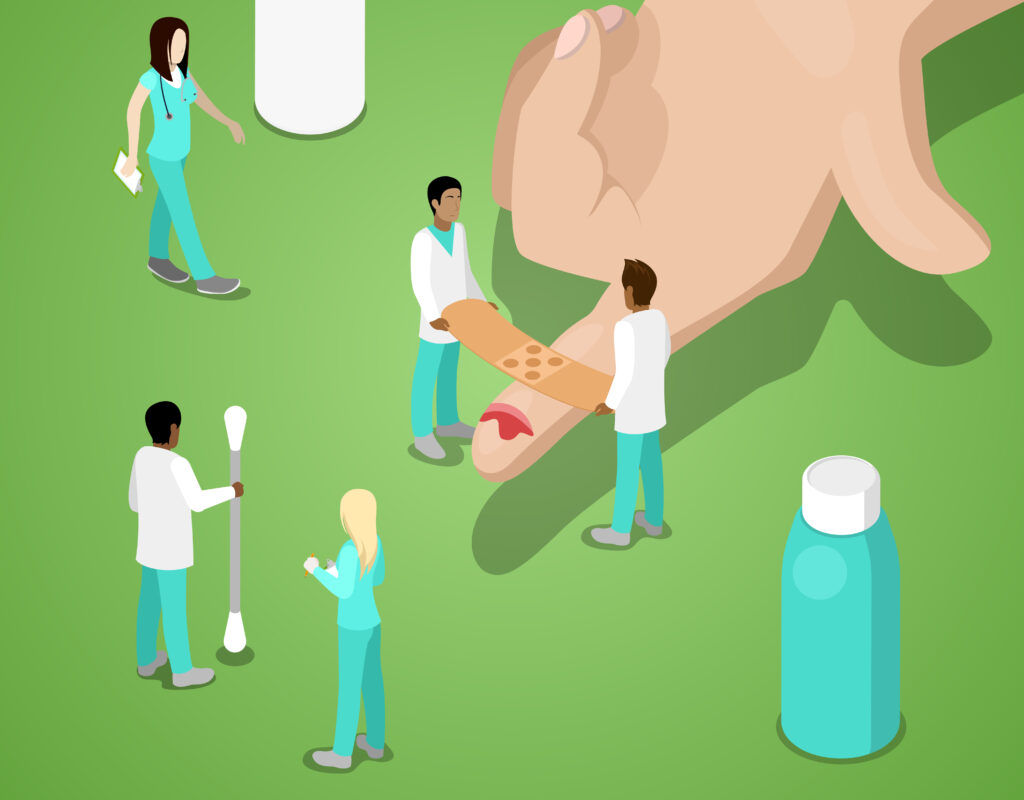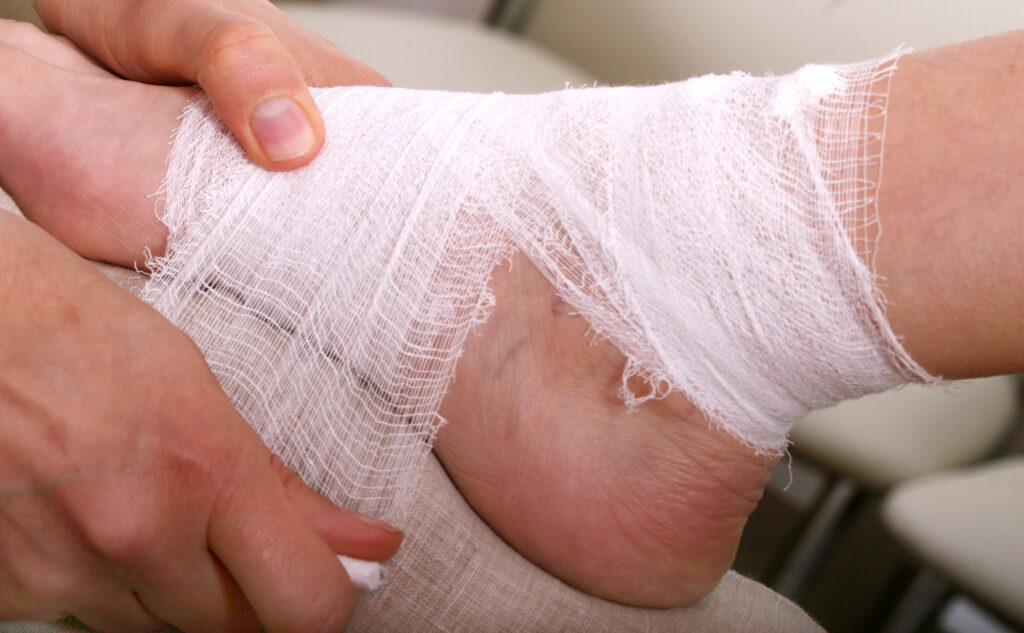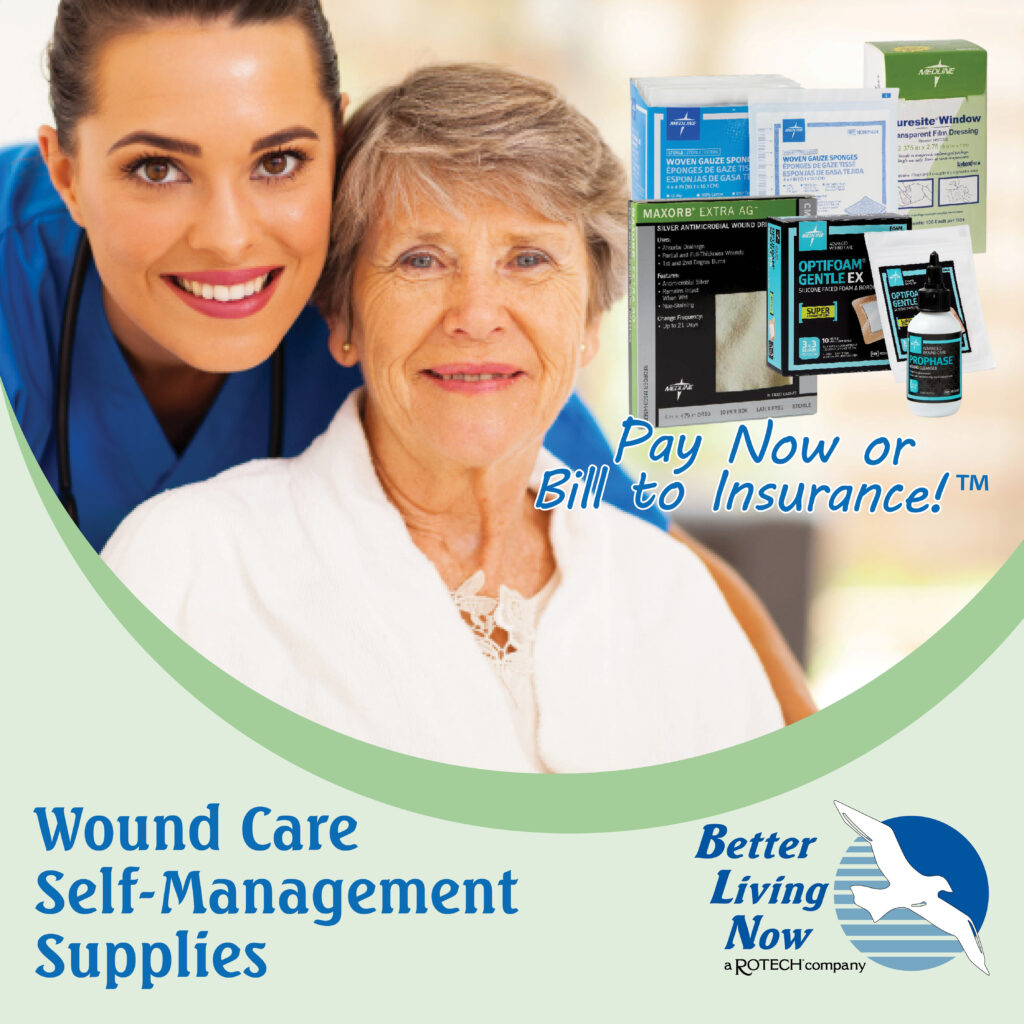Wound Care Treatments
Wound care treatment and prevention depends on the type of infection you have, and how serious it is. As always, all wounds must be cleaned regularly and covered using wound dressings and bandages. Nevertheless, your provider may prescribe oral antibiotics to help fight bacteria. Although, they clean the wound with an antibiotic solution or apply an antibiotic ointment. Consequently, if a wound hasn’t healed after a long time despite this wound care, special treatments such as vacuum-assisted closure or skin grafts are used.
For instance, when you have a wound for more than eight weeks without any signs of it healing, it’s considered to be a chronic wound. Therefore, these kinds of wounds usually arise as a result of poor blood circulation, diabetes, or a weak immune system. Additionally, open wounds on the lower leg are also known as venous leg ulcers.

Additional Wound Care Treatment and Prevention:
Debridement: When treating chronic wounds, doctors or nurses remove dead or inflamed tissue.
Wound Dressings: These dressings are used to remove excess fluid from the wound and protect it from infection.
Compression Stockings/Bandages: If poor blood circulation is what caused the chronic wound, then compression stockings or compression bandages can help it to heal faster.
Antibiotics: Wounds are even less likely to heal well if they are infected with bacteria so antibiotics are needed.
Hyperbaric Oxygen Therapy: In hyperbaric oxygen therapy, the person with the wound goes into a special chamber to breathe in oxygen under high pressure. This is meant to increase the oxygen concentration in their blood and improve the blood supply to the wound area.
Ultrasound and Electromagnetic Therapy: Ultrasound therapy involves treating chronic wounds using sound waves. The sound waves make the tissue warmer. Electromagnetic therapy is where weak electromagnetic waves are applied to the wound using pillows or mats that have magnets in them. Both of these therapies have not been proven to help the wound heal faster.
Negative Pressure Wound Therapy: In negative pressure wound therapy (also called vacuum-assisted closure or VAC therapy), the wound is covered with an airtight dressing that is connected to a pump by a thin tube. The pump continuously sucks fluid out of the wound, creating negative pressure across the surface of the wound. The aim is to increase the flow of blood to the wound. It helps keep the wound moist too, which is also meant to improve the healing process.
Skin Grafts: Skin grafts are considered as a treatment option if a wound is so large that it can’t close on its own. In this procedure, skin is taken from another part of your body – usually your thigh – and transplanted onto the wound.
Wound Care Prevention
Follow these steps to help keep wounds from getting infected:
• Clean the wound right away with soap and water.
• Apply a small amount of antibiotic ointment. You can buy this without a prescription.
• Cover wounds with a bandage or gauze dressing. Change it daily or whenever it gets wet or dirty.
• Keep the wound clean and dry for the first 24 hours.
• Wash your hands before and after you care for your wound.
• Change the dressing daily; follow the instructions your healthcare provider gave you.
• For chronic care, please work with your healthcare provider on your personalized therapy and healing goals.




